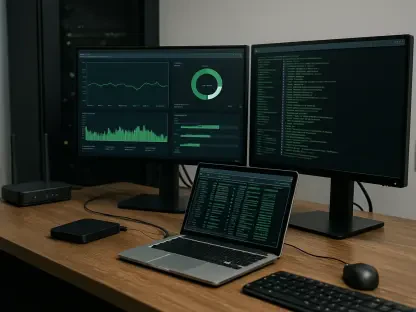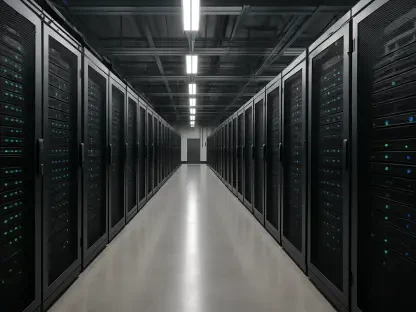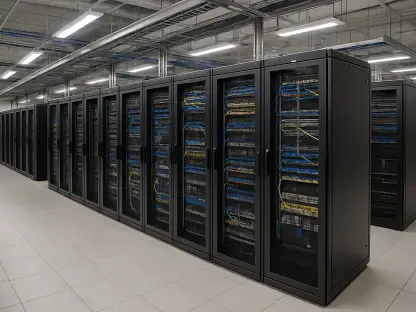I’m thrilled to sit down with Matilda Bailey, a renowned networking specialist whose expertise in cellular, wireless, and next-gen solutions offers a unique perspective on the fast-evolving tech landscape. Today, we’re diving into the groundbreaking collaboration between two industry giants, focusing on their integration of advanced interconnect technologies, the implications for data centers and PC products, and what this means for enterprise customers and the broader market. We’ll also explore the strategic motivations behind significant financial investments and the potential ripple effects on competing technologies and partnerships. Let’s unpack this historic alliance and its far-reaching impact.
How does the integration of Nvidia’s high-speed interconnect technology with Intel’s CPUs reshape the landscape for data centers and PC products?
This integration is a game-changer, particularly for data centers where high-speed data transfer between CPUs and GPUs is critical for AI and accelerated computing workloads. By embedding Nvidia’s NVLink into Intel’s CPUs, we’re looking at tighter coupling of processing power and reduced latency, which can significantly boost performance for complex computations. For PC products, this could mean more seamless compatibility between Intel’s processors and Nvidia’s GPUs, potentially leading to enhanced gaming and professional graphics experiences. It’s a step toward a more unified ecosystem, which could simplify development and deployment for both enterprise and consumer markets.
What do you think makes this partnership stand out as “historic” in the tech industry?
The term “historic” fits because this collaboration bridges two powerhouses that haven’t always seen eye to eye. Their past tensions, including legal battles over licensing, make this alliance particularly striking. Beyond that, it’s the scale and scope—combining Intel’s dominance in CPUs and manufacturing with Nvidia’s leadership in AI and accelerated computing—that sets a new precedent. This isn’t just about a single product; it’s about shaping the future of computing ecosystems, potentially influencing how competitors and partners align for years to come.
With Nvidia’s substantial $5 billion investment in Intel stock, what strategic goals do you believe they’re aiming to achieve?
Nvidia’s investment seems to be a clear vote of confidence in Intel’s long-term potential, especially at a time when Intel has faced questions about its market position. Strategically, Nvidia likely sees this as a way to secure a reliable partner for co-developing custom solutions while ensuring Intel remains a strong player to balance the competitive landscape against other rivals. It’s also about influence—having a financial stake could give Nvidia a louder voice in Intel’s roadmap, especially for technologies critical to AI and data center growth.
Do you think this financial backing could steer Intel’s strategic decisions in a new direction?
Absolutely, though not overnight. A $5 billion investment isn’t just pocket change; it’s a signal that Nvidia expects alignment on priorities like accelerating NVLink integration or focusing on joint product development. It might push Intel to allocate more resources toward these collaborative efforts, possibly at the expense of other initiatives. However, Intel’s a massive entity with diverse commitments, so any shift would likely be gradual and balanced against existing obligations.
Intel was previously committed to co-developing a competing interconnect technology with other major players. How do you see this new deal impacting that earlier commitment?
This new focus on NVLink does raise eyebrows about Intel’s dedication to the alternative interconnect project, UALink. In the short term, Intel will likely continue supporting UALink because they’ve got products and partnerships tied to it. But long-term, if the Nvidia collaboration proves more lucrative or technologically superior, Intel might quietly deprioritize UALink. It’s a delicate balancing act—they won’t want to alienate other partners, but business is business, and results will dictate focus.
What potential benefits might IT buyers and enterprise customers see from this collaboration?
For IT buyers and enterprises, the biggest win could be improved performance and compatibility between Intel CPUs and Nvidia GPUs. This could translate to more efficient data center setups for AI workloads or better-integrated client solutions for businesses relying on high-end graphics. There’s also a chance for more stable supply chains down the line if this partnership helps Intel scale production. However, immediate relief on GPU shortages seems unlikely—this deal is more about future innovation than solving today’s availability crunch.
Analysts have suggested that pricing for these combined solutions might not shift much. What’s your perspective on why that could be the case?
I think pricing staying stable makes sense because the core cost drivers, like Nvidia’s GPUs, aren’t fundamentally changing with this deal. You’re still paying a premium for cutting-edge GPU tech, and Intel’s CPU pricing is already competitive. The collaboration focuses on integration and performance, not cost reduction at the component level. Unless there’s a major shift in manufacturing or supply dynamics, I don’t see direct price drops coming from this partnership in the near term.
There’s no indication of Nvidia moving chip manufacturing to Intel’s facilities as part of this agreement. Why do you think that element was excluded?
It’s likely a matter of timing and trust. Nvidia’s heavily reliant on TSMC for its chip production, and shifting even a portion to Intel’s foundries would be a massive undertaking requiring proven reliability and cost benefits. Intel’s manufacturing has had its own challenges recently, so Nvidia might be cautious until those are fully resolved. Plus, this deal seems more focused on design and integration than on altering supply chains—at least for now.
Looking ahead, what is your forecast for how this collaboration might evolve, particularly in terms of manufacturing or broader industry impact?
I believe this partnership could deepen over the next few years, especially if Intel’s foundry capabilities strengthen and prove competitive. We might see Nvidia testing the waters with Intel as a secondary manufacturing source to diversify away from sole dependency on TSMC, which could stabilize supply and potentially lower costs long-term. Industry-wise, this alliance might pressure competitors to form similar tight-knit collaborations, accelerating innovation but also intensifying rivalries. The real test will be how quickly they deliver tangible products—success there could redefine computing standards across data centers and beyond.









